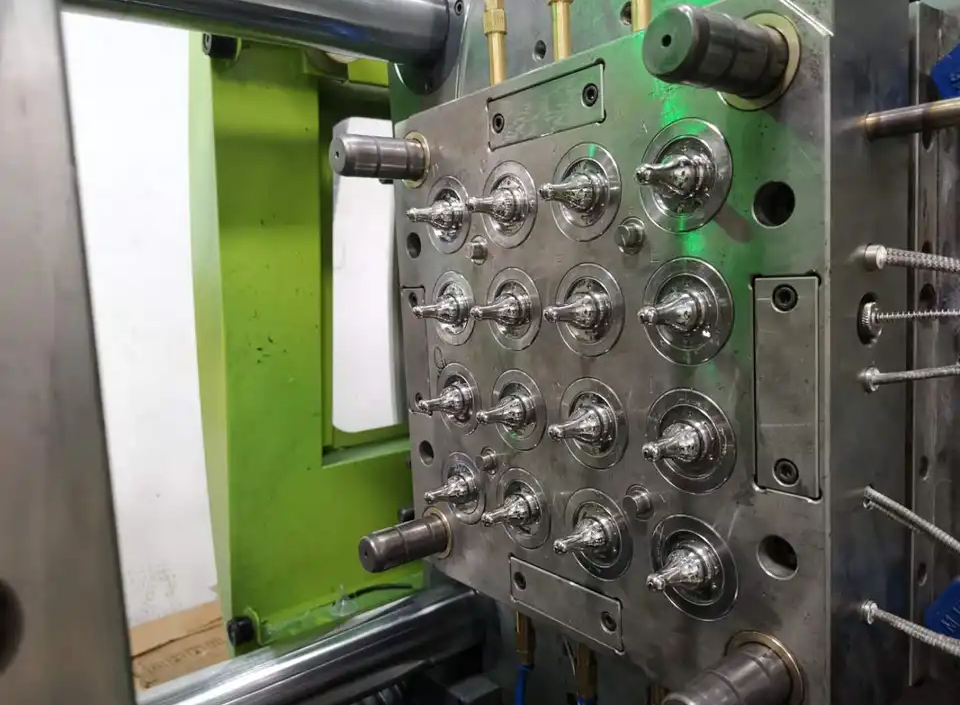Injection molding is a rapid prototyping and manufacturing process applicable in the mass production of plastic parts. It is a six-step process that involves making a mold, clamping, injection, dwelling and cooling, and ejection. The injection mold is a unique component of the injection molding machine made from materials such as stainless steel and aluminum and comes in several designs divided into three categories: family mold, single cavity, and multi-cavity injection molds.
What are the benefits of using a multi-cavity mold and how does it differ from the other types of injection molds? This article discusses multi-cavity injection molds so that you can effectively use the right one for your job.
What are Multi-Cavity Injection Molds?
A multi-cavity injection mold has more than one cavity each with the same design. As a result, it can produce the same number of cavities of product per production cycle. Generally, these molds can contain from two to 164 cavities with an increment of 2, 4, 8, 16, 24, 32, etc.

Single cavity vs Multi cavity mold
Multi-cavity injection molds are different from single-cavity and family molds in several ways. When compared to single cavity molds, the number of cavities is the determining factor. Due to the increased number of parts even with the same design, a multi-cavity mold allows the production of parts in a shorter time.
Family cavity vs Multi cavity mold
Family molds and multi-cavity molds are the same in terms of the multiple numbers of cavities they have. However, family molds have different designs on each cavity. This makes them more suitable for making parts and prototypes with entirely different designs. Furthermore, such molds are characterized by different filling speeds which can lead to injection molding defects. Family molds are therefore less expensive due to the higher tendency for molding defects.
Read more about injection molding defects and their causes here.
Advantages of Multi-cavity molds
Each type of injection mold has its application and features. Below are a few benefits of considering a multi-cavity injection mold when making custom injection molds:
Increased production efficiency and speed
The increase in the number of cavities in a multi-cavity injection mold means that there is a higher number of parts produced after a production cycle. The number of parts produced depends on the number of cavities and using one increases the speed and efficiency of production. However, other factors such as the design, venting, and filling speed will play a huge role in the overall speed and efficiency.
Reduced cost per unit
The number of parts produced per cycle also means there is a lesser cost incurred. Lesser incurred cost is due to the lower labor used, and lower operating time. As a result, using a multi-cavity injection mold is a cost-effective process.
Enhanced consistency and quality control
Multi-cavity molds are the better option for mass production with enhanced consistency and quality control. Using a mold with numerous cavities as opposed to a single cavity mold will reduce the chances of defects, and ensure that the product is within the required specifications
More design flexibility
Compared to single-cavity molds, multi-cavity molds allow designers and manufacturers to be more flexible in terms of product design. With a single-cavity mold, part manufacturing is singly and separately. As a result, this can limit the design complexity. In contrast, multi-cavity molds allow the production of several identical parts at once. Therefore, it is possible to create more complex designs with greater ease.

Furthermore, using a multi-cavity mold offers greater flexibility in terms of part size and shape. For example, if a product requires multiple parts of different shapes and sizes, the mold can quickly make parts of a given size before jumping to other sizes. This simultaneous production of parts saves time and reduces costs.
Better use of available space
One multi-cavity mold can produce multiple parts at once and reduce the overall footprint of the production process compared to using a single-cavity mold. As a result, multi-cavity injection molds are suitable for small or crowded manufacturing facilities for producing larger volumes of parts.
If you are into the field of production engineering, you might like these articles –
Factors to Consider When Using Multi-Cavity Injection Molds
Several factors come to play when choosing custom injection molds with multi-cavities. Below are very crucial ones to take note of:
- The complexity of the product being manufactured
Complex products will require an intricate design which can increase the cost of manufacturing the mold. Furthermore, it makes the mold manufacturing process more difficult.
- Machine capacity and capability
As discussed before, multi-cavity molds can contain from two to 164 cavities by an increment of 2, 4, 8, 16, 24, 32, etc. Therefore, you should consider the capacity and capability of the machine before choosing the type of mold.
- Material selection
Multi-cavity molds are more compatible with materials with high flowability such as liquid silicone rubber (LSR) due to the ease of filling. Nevertheless, you should ensure the material retains its strength and dimensional stability, chemical resistance, and stability in high temperatures.
- Tooling cost
Cost is the most important factor in selecting the right multi-cavity mold. The higher the number of cavities the increase in the tooling cost. Also, stainless steels mold is costlier than aluminum. Therefore, since multi-cavity mold is used for mass production and considering the durability, stainless steel is the most chosen mold material and this incurs a cost higher than the tooling made by aluminum.
I hope this gives you more clarity on your needs or a better understanding on multi cavity injection molds and their benefits. Let me know if your personal experience says something more and I will add it to this list 🙂

